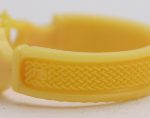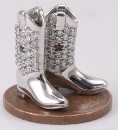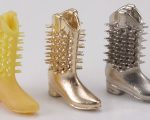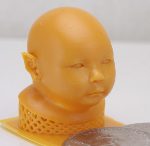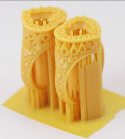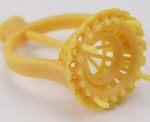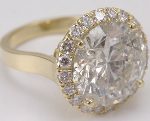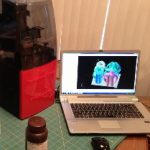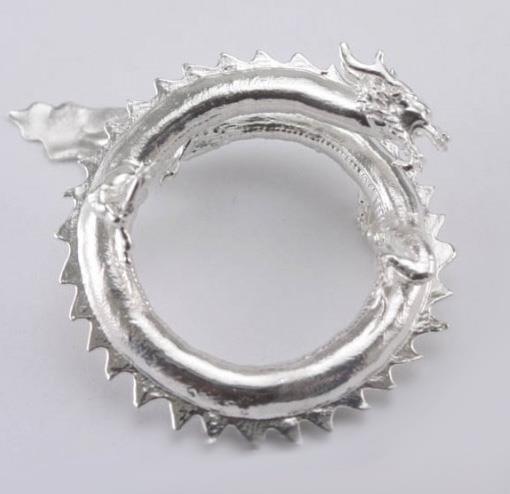
Successfully 3D Printing Jewelry With Chicago Charm Company
Our Experience
Carter Lee had longed of breaking out of the mold. As a 2nd generation jeweler, the years working in a hyper-concentrated venue like Jeweler’s Row showed how little has changed compared to compelling advancements in personal manufacturing. He combined the entrepreneurial and creative sides of his personality to found the Chicago Charm Company. Starting a jewelry business has never been easy. The industry is established, customers are loyal in their patronage, and that makes it difficult to grow a customer base if nothing new is brought to the table. “The traditional method of creating jewelry involved multiple steps. It could take weeks before a project would come to fruition. There were cues that emerging technology could bring higher efficiency, less waste, a better product, and above all else ending the communications gap between the client and designer.”
“I’ve spent a lifetime in and around the jewelry industry, and while its commendable to stay with tradition it’s equally important to seek and explore and push,” says Carter. Having spent years creating jewelry the traditional way was something that worked for him and the past generations, but the old workflow for custom-made, personal creations reached certain limitations and has remained stagnant for the longest time.
Enter the Digital Workflow
The earliest 3D design software were limited and mostly derivative of tools used by industrial and mechanical designers. Jewelry made with the early software looked like they belonged more inside a transmission case than on a finger. “Thankfully, the tools have evolved and new ones introduced to let jewelers be as expressive as their abilities can carry them.” With that, Carter began the journey of using the new workflow. Designing in 3D permits countless opportunities to non-destructively explore variations or make changes according to each client’s individual needs.
It’s one thing to design jewelry in the virtual world of the computer but to transition it into the real-world requires another crucial component, the machine. Machines that exhibited the level of detail needed by jewelers had mostly been within exclusive reach of well-funded service bureaus. “All my early 3D projects were sent to various service bureaus, but it quickly became apparent this workflow wasn’t sustainable,” Carter mused, “It’s like deciding the copy-shop is still the proper venue for laser printing in today’s environment” Among the 3D machines that service bureaus used, those that deployed the EnvisionTEC Perfactory® resulted in models that best withstood handling while providing astonishing detail. “It wasn’t just about the service bureau’s soaring print fees,” explained Carter, “That disconnect introduced all sorts of back-and-forth.” He concluded that securing his own 3D printer was imperative.
Making that dream a reality with the help of the EnvisionTEC Perfactory® Micro
At the time when his 3D design, modeling, and sculpting abilities coalesced, personal 3D printers began emerging and became considerably more attainable. Which one was right though? Carter and many of the bench jewelers he knew took pride in curating their workbench tools to perfectly match their needs, “Focus on choosing the best and you’ll only have to buy it once. Buy cheaply and you’ll often end up buying a 2nd time.” 3D printers are no different in this regard.
What separated the EnvisionTEC’s from the competition? For Carter, countless things made the Perfactory® Micro a landslide decision. From the start, EnvisionTEC prints have demonstrated a breathtaking level of ultrafine detail. The list of materials developed specifically for jewelry featuring burn-out characteristics show maturity. That in turn lends to familiarity and consistency among casting workshops. Other factors like accessibility of tech support, software, and reliability also weighed considerably. Other printers might hit one or two of these requirements in questionable levels of completeness, but only EnvisionTEC covered everything. To top it off, only EnvisionTEC provided two days of hands-on training at either their California or Michigan facilities. This is invaluable to anyone who’s never had first-hand experience in commercial-grade 3D printing. Configuring the machine, learning to fix model geometries, generating supports, clever workflow techniques, best practice procedures and the chance to immediately ask questions provided solid confidence that the machine can start producing the moment it’s plugged into the design environment. “In retrospect, slowly acquiring all that knowledge through months of trial and error when simultaneously running a business would’ve been nightmarish.”
Included Software
This component is easy to overlook by the beginner until it’s too late and they’ve committed to a printer that glosses over or omits this. The support-generation software included with the EnvisionTEC has no equal. “It’s effectively the equivalent to Photoshop in image-editing power and comprehensiveness.” EnvisionTEC’s bundled software automatically generates numerous kinds of supports in the most intelligent manner that lets the beginner focus on printing. Even in manual generation mode, the process is streamlined toward making the task fast and simple. The same software also features one-click identification and repair of poorly meshed geometry. On occasions when a client hands Carter a third-party STL mesh for printing, the EnvisionTEC software makes all the difference between one-click fixing or foolishly wasting hours running that mesh through a myriad of “freebie” under-developed solutions. Penny-wise, pound foolish indeed.
Easy and Reliable Printing
Service bureaus used by jewelers indirectly endorse EnvisionTEC simply by how they continue to deploy Perfactory® machines above all others. The EnvisionTEC Perfactory® Micro continues to prove it’s a solid day-to-day workhorse. “I’ve stopped worrying about whether I’ll have a successful print. That is how reliable it’s been for me.” notes Carter.
Previously Unattainable Geometry
With the printer decision confidently locked, Carter spends his time focused on design rather than mired in continuous tweaking and fixing. As an example of how additive manufacturing shines over previous subtractive manufacturing methods, an associate jeweler asked Carter to design a fortune cookie charm. The folded geometry introduces hollow regions that would otherwise be impossible to cleanly access with a CNC mill. Not only can a 3D printer make a single, unbroken object in one pass, the object was successfully direct-cast with ease. That’s labor, time, and material saved in one fell swoop. “When I show this process to fellow jewelers, you can see their eyes widen and their minds blown” says Carter. “I’ve demonstrated the cookie charm was a cast-ready model within a day of inception. When that light-bulb moment hits they start thinking about all those countless projects they previously couldn’t do. With this advantage, I plan on bringing charms and all manner of jewelry that standout from the crowd.”
Ongoing Support
“Approximately a month into owning my printer, EnvisionTEC developed some improvements to the Perfactory® Micro. In an unexpected move, they offered to ship out a replacement to existing users and picked up the tab for return shipping on the old machine. I’m not sure that those other candidates would have been as dedicated to refining their product. Looking back at this journey, it’s gratifying how the the printer fit so well into my workflow. This is especially emphasized when observing the issues other 3D printers are still trying to work out. Like many of the other tools at my workbench, the Perfactory® Micro has proven to work astonishingly well and reliably whether printing models for my own clients or associates. It’ll be the most important part of my business’ equation through the foreseeable years to come.”
Although an increasing stream of fellow jewelers and new clients continue to seek Carter to help bring their projects to fruition, he’ll try his best to carve out moments to post his progress and experiences on his website: www.chicagocharmcompany.com




